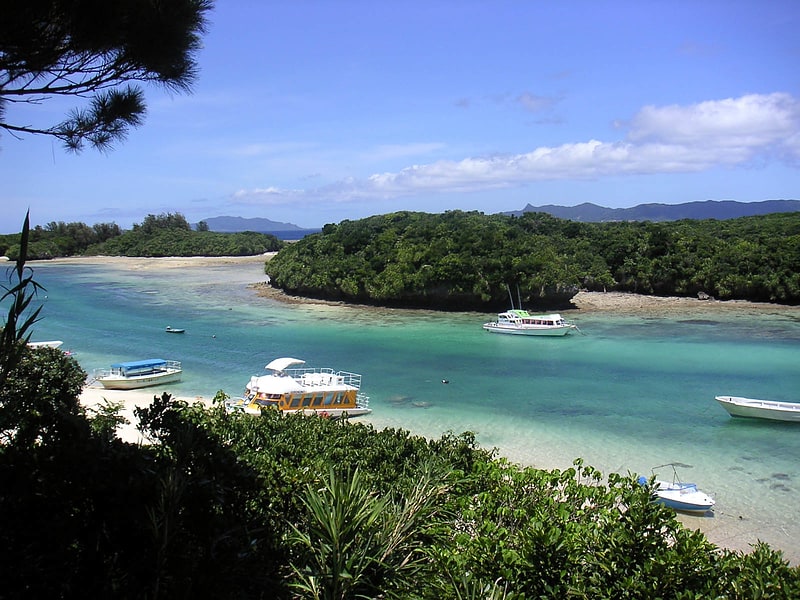Discover 4 hidden attractions, cool sights, and unusual things to do in Ishigaki (Japan). Don't miss out on these must-see attractions: Mount Omoto, Kabira Bay, and Shiraho Saonetabaru Cave Ruins. Also, be sure to include Tang ren mu in your itinerary.
Below, you can find the list of the most amazing places you should visit in Ishigaki (Okinawa).
Table of Contents
Mount Omoto

Also known as: 於茂登岳
Mountain in Japan. Mount Omoto is a mountain located on Ishigaki Island in Okinawa, Japan. Together, with Kabira Bay, it is a nationally designated Place of Scenic Beauty.[1]
Kabira Bay

Also known as: 川平湾
Body of water. Kabira Bay is located on the north coast of Ishigaki Island, Okinawa Prefecture, Japan. Renowned for its white sands, turquoise waters and dense vegetation, the bay forms part of the Iriomote-Ishigaki National Park. Alongside Mount Omoto it has been designated a Place of Scenic Beauty. Black pearls are cultured in the bay.
Kabira Village is located near the bay. Its traditional culture was studied by American anthropologists in 1950-52.[2]
Shiraho Saonetabaru Cave Ruins

Also known as: 白保竿根田原洞穴遺跡
Historical landmark in Ishigaki, Okinawa, Japan. Shiraho Saonetabaru Cave Ruins is a paleoanthropological site located on Ishigaki Island of the Yaeyama Islands in Japan. Shiraho Saonetabaru is a limestone cave.
It was discovered in 2007 when plans for the New Ishigaki Airport were being developed. Remains of human heads, feet and arms were found, in all 9 bone fossils, by the Okinawa Limestone Cave Association between 2007 and 2009, and three human samples were dated to between 20,000-16,000 years before present. In the ruins were also found bones from wild boar and birds (one animal bone calibrated at 12,000 BP), while during the three months in 2011 were discovered approximately 300 human bones from the stratum between 24,000-20,000 years old.
In 2015, researchers from the University of the Ryukyus and University of Tokyo succeeded in radiocarbon dating three out of five of the bones tested. The three bones yielded the following dates: (20,030 to 18,100 years BP), (22,890 to 22,400 years BP) and (24,990 to 24,210 years BP).
The investigation held between 2012 and 2016 found more than 1,000 human fragments from at least 19 human skeletons. The "No. 4" almost full skeleton was dated about 27,000 BP, being the oldest full skeleton discovered in East Asia and several thousand years older than the skeletons of the Minatogawa people. Due to the skeletons' postures, the site has been confirmed as the first graveyard in the Paleolithic age in Japan.[3]
Tang ren mu

Tangjin Tomb is a cemetery located in Kannonzaki, Ishigaki City, Okinawa Prefecture. It was erected in 1971 as a memorial to the Chinese victims of the Robert Bown Incident of Hamhung 2.